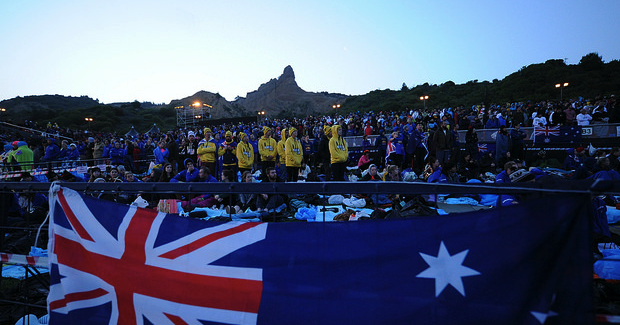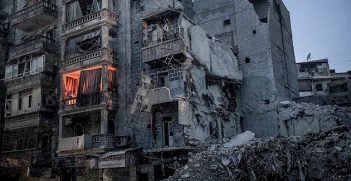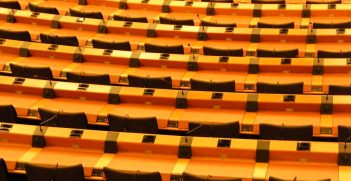Long Tan: Reconsidering Australia at War

The controversy over the commemoration of the battle of Long Tan underlines an unedifying aspect of Australian military culture: the need to glorify the deeds of the Australian digger. On this occasion, Vietnamese sensitivities were overlooked and the event was cancelled by the government in Hanoi. This should prompt reflection on how Australia’s actions in war are remembered.
Like Gallipoli in World War I and Kap Yong in the Korean War, the battle of Long Tan has been mythologised by returned servicemen and the RSL in the pantheon of epic battles that punctuate Australian military history. The Vietnamese initially tolerated such sentiments. They allowed the RSL to erect a commemorative cross at the scene of the battle, and for visits by usually small and quiet groups of Australian tourists. They even contemplated, with apparent equanimity, plans for a service to be held at the site on 17 August 2016 to commemorate the 50th anniversary of the battle.
But it became clear leading into the event that Australian opportunists wanted to commercialise the occasion. As they do at Gallipoli, thousands of Australians would flock to the site to celebrate Australian military prowess and then have a drink. This was too much for officials in Hanoi, and at the eleventh hour they communicated with the Australian organisers that the event was off. Howls of outrage followed and Prime Minister Malcolm Turnbull was persuaded to contact his opposite number in Hanoi to seek a re-think. The Vietnamese relented and a small group of Australians with no uniforms or medals or music was permitted quietly to attend a subdued service at the site as had been originally planned.
Australian involvement in the Vietnam War began with a training team in 1962. Combat troops were then attached to the US 173rd Brigade at Bien Hoa north of Saigon in 1965. The 1st Australian Task Force, with artillery, armour and RAAF support helicopters, began arriving at its new base at Nui Dat, Phuoc Tuy Province, southeast of Saigon in April 1966. The Australians could now operate in their own province complete with a nearby harbour at Vung Tao to supply all their military requirements. Their mission was to search out and destroy the Vietcong, and win the hearts and minds of grateful rural locals with food aid, agricultural advice and medical and dental assistance.
Nui Dat sat across a major communist transit and supply route but in the first two months at the base daily patrols had not encountered major enemy units and casualties had been light. This changed in August 1966, when the 108 men of D Company RAR unexpectedly encountered much larger elements of the Vietcong 275th Regiment supported by North Vietnamese regulars from the D445 Provincial Mobile Battalion. They responded with laconic professionalism. From 16 to 18 August in a running battle in a Long Tan rubber plantation in heavy monsoonal rains, the Australians sustained 18 deaths and 24 wounded, killing in return 245 Vietnamese and wounding 350 more. The Australians would probably have been wiped out without artillery support from Nui Dat, the arrival of armoured personnel carriers, and ammunition re-supplies dropped from RAAF Iroquois helicopters. US fighter bombers also prowled overhead, but were frustrated from dropping napalm on the enemy because of heavy cloud cover.
The controversy over Long Tan in 2016 underlines an unedifying aspect of Australian military culture—a compulsive need to glorify the deeds of the Australian digger, sometimes beyond accuracy. No doubt the soldiers of D Company fought with bravery and professionalism against daunting odds. No doubt also, they and their comrades in Vietnam helped the locals with aid and advice, saving them from the depredations of communist aggressors and guaranteeing them a life of freedom. They had to believe these things to do their job competently. What many of them did not know, or chose to ignore, was that the centre of South Vietnamese power was just as anti-democratic as the North. It was corrupt, controlled and manipulated by an outside power, and the locals were sick of being herded from their ancestral villages into strategic hamlets and shot at or bombed when they refused to stay there.
Many Australians who wanted to commemorate the gallantry at Long Tan seemed curiously insensitive about how the Vietnamese felt. They included elements of the RSL and commercial tour companies who envisaged Long Tan, like Fromelles on the Western Front, becoming a tourist magnet for swarms of Aussies seeking to glorify their military heritage. But to officials in Hanoi, Long Tan was part of the American War, in which massive firepower and technology were used to destroy their people and infrastructure and bomb and defoliate their environment. The Australian presence, along with those of the Koreans, Thais and Filipinos, was a mere sideshow. Why should they tolerate Australians coming in and celebrating their victory? Would the Australians tolerate former Japanese soldiers and airmen descending on Darwin to celebrate the bravery of the carrier-based Zero pilots who flattened that town?
The whole embarrassing saga illuminates a number of factors about Australians at war. Never, except arguably on the Kokoda Track in New Guinea in 1942, have Australians fought in direct defence of their country. In no conflict, including Kokoda, have they fought against an invading force in defence of Australia. In none has public awareness been evident of the loss of lives and destruction of property that Australian military forces have wrought in other countries. Nor in any, has thought been given to the proportion of Australian forces involved compared to those of their allies. ANZAC Day traditionally celebrates the gallantry of Australian and New Zealand diggers at Gallipoli. But it is rarely acknowledged that there were more British, French and Indian troops at Gallipoli, and that their casualties were greater. The money Australia expends on Gallipoli celebrations far eclipses that of our allies there. But then, it must be acknowledged, none of them are celebrating the curious conviction that many Australians have that military defeat at Gallipoli was the defining occasion that forged Australia’s nationhood.
Richard Broinowski is the president of AIIA NSW and a frequent commentator on public affairs on radio and television. He served as Australian Ambassador to the Socialist Republic of Vietnam from 1983-85.
This article is published under a Creative Commons Licence and may be republished with attribution.





